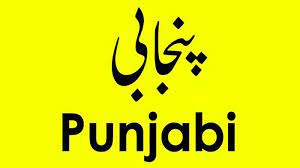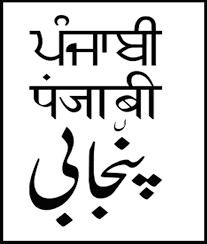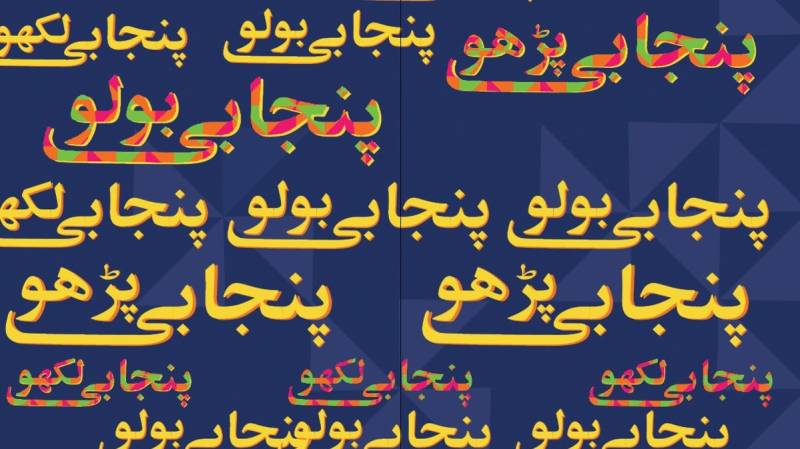
Punjabi is one of India’s 22 official languages. It is spoken by over 100 million people worldwide.
In Pakistan, the regional Sindhi language influences the main Punjabi language resulting in dialects such as Majhi, Pothohari, Hindko and Multani. Pakistani Punjabi also has Persian, Central Asian and Arabic vocabulary influences.
By Dave & Nita Anand
Languages in the Indian subcontinent belong to four language families: Indo-European, Dravidian, Mon-Khmer and Sino-Tibetan. Indo-European and Dravidian languages are used by a large majority of India’s population. The language families map roughly over geographic areas; languages of the Indo-European group are spoken mainly in northern and central regions.
The languages of southern India are mainly of the Dravidian family. Some ethnic groups in Assam and other parts of eastern India speak languages of the Mon-Khmer group. People in the northern Himalayan region and near the Burmese border speak Sino-Tibetan languages.
Punjabi is one of India’s 22 official languages. The Punjabi language is spoken by over 100 million people worldwide; about 90 million in the larger Punjab, a territory that was divided between India and Pakistan by the British during the 1947 partition. Another 10 million Punjabi speaking communities are spread throughout Canada, United Kingdom, the United States, Malaysia, South Africa, the United Arab Emirates and elsewhere.
In linguistic terms, Punjabi language is classified as a member of the Indo-Aryan subgroup of the prehistoric Proto-Indo-European family of languages (See attached “Roots of World Languages Chart”).
Indo-Aryan languages, also called “Indic” languages, are a subgroup of the Indo-Iranian branch of the Indo-European language family. In the early 21st century, Indic languages and their dialects were spoken by more than a billion people, primarily in India, Bangladesh, Nepal, Pakistan and Sri Lanka.
Linguists agree that all languages within the Indic family developed in three major stages: Old Indo-Aryan or Sanskrit; Middle Indo-Aryan, consisting of Prakrit and Apabhramsha stages; and New or Modern Indo-Aryan.
Old Indo-Aryan, referred to as “Sanskrit” language, was used to create Hindu sacred texts known as “Vedas” that date back to 1500 BC or thereabouts. Middle Indo-Aryan languages come under the name “Prakrit,” which became prominent from 3rd century B.C. to 4th century A.D., with Apabhramsha representing the latest stage of Middle Indo-Aryan development as a transition to New Indo-Aryan languages (6th century to 15th century).
“Prakrit” is derived from the Sanskrit term “Prakrta,” which implies original, natural, or primary, in contrast with “Samskrta,” which means refined or secondary. A few language experts believe Prakrits are older than Sanskrit due to their originality factor – however, since Sanskrit, especially Vedic Sanskrit, is closer to Proto-Indo-European than are the Prakrits, it places Sanskrit to an earlier stage of linguistic history.
The Punjabi language is a descendent of the Shauraseni Prakrit, a language of medieval northern India that was used primarily in drama and plays during the 3rd to 10th centuries. It is believed Punjabi developed as an evolution from the Shauraseni-Prakrit-Apabhramsha languages around the 11th century, with some influence from the pre-Indo-Aryan languages on its phonology and morphology.
Punjabi’s uniqueness lies in the use of tones by which words are differentiated that are otherwise the same. The language uses three contour tones; these tones change over the course of a word. Tones in Punjabi are realized over two successive syllables and are expressed phonetically as high rising-falling, mid rising-falling and very low rising.
Dialects of Punjabi
The key dialects of Punjabi in India include: Majhi, Doabi, Malwai and Powadhi that have regional Hindi/Sanskrit influence on the main Punjabi language. In Pakistan, the regional Sindhi language influences the main Punjabi language resulting in dialects such as Majhi, Pothohari, Hindko and Multani. Pakistani Punjabi also has Persian, Central Asian and Arabic vocabulary influences.
To write Punjabi, one can use three alphabets – namely, Gurmukhi, Shahmukhi and Devanagri to a lesser extent. The name Gurmukhi means “from the mouth of the Guru,” Shahmukhi translates to “from King’s mouth” and Devanagri implies “The container of divine light.”
A Brief History of Alphabets
By 2700 B.C., the ancient Egyptians had developed the hieroglyphic writing system; it had significant influence on the creation of the first alphabet “Semitic Alphabet” used to write the Semitic language. This Semitic alphabet adapted Egyptian hieroglyphs to write consonantal values based on the first sound of the Semitic name for the object depicted by the hieroglyph.
All subsequent alphabets around the world have been either derived from this first Semitic alphabet, or have descended from one of its offshoots.
The Semitic alphabet was used sparingly for about half a millennium and retained its pictorial nature, until adopted for governmental use in Canaan. The first Canaanite states to make extensive use of the Semitic alphabet were the Phoenician city-states and so later stages of the Canaanite alphabet adopted the name of “Phoenician alphabet.”
Since the Phoenician cities were maritime states at the center of a vast trade network, the Phoenician alphabet spread rapidly throughout the Mediterranean. Two variants of the Phoenician alphabet had major impacts on the history of writing: the Aramaic alphabet and the Greek alphabet.
Almost all the modern alphabets of Asia appear to be descendants of the Aramaic alphabet, which evolved from the Phoenician in the 7th century B.C. as the official alphabet of the Persian Empire. By the 5th and 6th century B.C., the Persian Empire (Cyrus and Darius the Greats) extended its rule into India’s Indus Valley, before the Greek Emperor Alexander the Great conquered that part of the world in the 4th century B.C.
The Persians brought with them Aramaic alphabet from which the Kharosthi alphabet arose that was largely used in the Punjab, Gandhar and Sindh between 300 B.C. and 400 A.D. But even then the local Brahmi alphabet, which appeared in India sometime before 500 B.C., was commonly used along with the Kharosthi alphabet.
Brahmi is thought to have been derived from the Aramaic or Phoenician alphabets; however, a few linguists have linked its roots to Indus and Harappa alphabets back to 2000 B.C. The earliest known inscriptions showing Brahmi alphabet are those from King Asoka time (about 300 B.C.); it was used by a number of languages, including Sanskrit and Prakrit.
Enriched by various local and neighborly influences, including the Kharosthi alphabet, Brahmi in due course replaced Kharosthi and became the single most important alphabet. The golden period of literary and cultural activity during the Gupta dynasty (4th and 5th century) further improved the Brahmi alphabet, making it more extensive and common throughout the Indian Subcontinent.
Gurmukhi Alphabet
 Since the Sikhs in India speak Punjabi as their predominant language, their holy book Guru Granth Sahib, employs Punjabi language, written in Gurmukhi alphabet. The Gurmukhi alphabet is derived from the Landa alphabet that has roots in the Brahmi alphabet. Second Sikh Guru Angad (1539-1552) enhanced the Gurmukhi alphabet to its current state for the express purpose of writing the holy book, giving rise to the slogan “Guru’s mouth.” Punjabi is not the only language used in Sikh scriptures; the GGS has several other languages interspersed with Punjabi, including – Persian, Sanskrit, Brajbhasha and Khariboli – all written using the Gurmukhi alphabet though.
Since the Sikhs in India speak Punjabi as their predominant language, their holy book Guru Granth Sahib, employs Punjabi language, written in Gurmukhi alphabet. The Gurmukhi alphabet is derived from the Landa alphabet that has roots in the Brahmi alphabet. Second Sikh Guru Angad (1539-1552) enhanced the Gurmukhi alphabet to its current state for the express purpose of writing the holy book, giving rise to the slogan “Guru’s mouth.” Punjabi is not the only language used in Sikh scriptures; the GGS has several other languages interspersed with Punjabi, including – Persian, Sanskrit, Brajbhasha and Khariboli – all written using the Gurmukhi alphabet though.
Modern Gurmukhi has 41 consonants (vianjan), nine vowel symbols (lāga mātrā), two symbols for nasal sounds (bindī and ṭippī), and one symbol which duplicates the sound of any consonant (addak). In addition, four conjuncts are used: three subjoined forms of the consonants Rara, Haha and Vava, and one half-form of Yayya. Use of the conjunct forms of Vava and Yayya is increasingly scarce in modern literature.
Pakistani Punjabis have been using the Shahmukhi alphabet from the times of the Muslim and later Mughal Empires in the region and thus the term “from King’s mouth.” Shahmukhi is a modification of the Persian-Nasta’liq alphabet – meaning, the direction of writing is right to left, while that for Gurmukhi is left to right.
Devanagri alphabet for Punjabi language is mostly used by Hindus living in the neighboring states of India’s Punjab, which include Haryana, Himachal Pradesh and parts of Rajasthan.
Modern Punjabi
Majhi dialect of Punjabi is common to both Pakistan and India and it is the basis for the bulk of spoken and written language since the 10th century. From the mid-19th century and to the more recent times, Punjabi, much like English, has spread around the world and incorporated/integrated local vocabulary of the regions where Punjabi emigrants have established themselves.
While the language borrows heavily from Urdu, Hindi, Sanskrit, Persian and English, there are loanwords from Spanish and Dutch in the evolving Modern Punjabi. It is expected that the “Diaspora Punjabi” of the future will increasingly deviate from the Punjabi found on the Indian Subcontinent.
The Bollywood culture in India has further modernized Punjabi in its more adventurous movies, while Bollywood’s Punjabi songs are setting new sales records. A few of these Punjabi songs are quite popular in the bars and nightclubs of the western world.
__________________
Dave & Nita are Punjabi speaking Sikhs whose forefathers hailed from the greater Punjab Empire of the nineteenth century.
Courtesy: Patch
